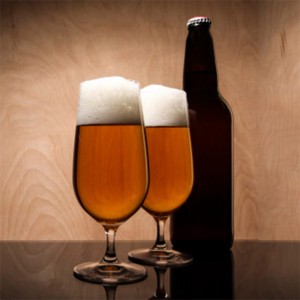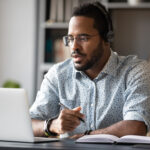 Craft Beer – A History
Craft Beer – A History
by Gregory Papadin and Jacquelynne Salas
Beer drinking began around 3500 B.C., when the brewing of beer became a worldwide process. Beer was originally limited to high-class citizens until it turned into a wide-scale production, where it became available for anyone with a passion to drink beer. Native Americans even created their own type of beer using corn, thus the creation of corn beer. Craft brewing began to take off in the 1970s, after the different styles and techniques that were introduced from immigrants started to fade due to the prohibition. Starting from 700 and getting cut to 50, breweries slowly diminished and the options for beer became limited. However this sprung about a new era, where the different styles and traditions of beer came from homebrewing.
Since their options were limited, people learned to make the beers that they weren’t able to buy anymore. Homebrewing is what led to the creation of craft beers. Through countless homebrewing techniques and the collection of influences from all over the world, people began to spread their unique craft beers and start their own brewing companies.
Craft brewing has grown exponentially, from eight craft brewers in 1980 to 537 in 1994. Since June 1, 2013, there have been more than 1,500 breweries specializing in craft beers. The evolution of craft beer has been a growing process that continues to evolve and incorporate different cultures worldwide.
Craft Beer – A San Diego History
San Diego was a central part in the brewing of craft beer. Prior to prohibition, San Diego had about seven breweries and 55 saloons. Those seven breweries turned to three (after the illegalization of alcohol) and together they produced 25 percent of California’s beer. However, this success did not last long. The major national breweries quickly bought out the local breweries and became the primary distributers in the beer market. Due to the major breweries’ role in packaged beer, increased barrel taxes, grain rationing, and the increased market for imported beer, all of San Diego’s breweries eventually closed in 1953.
It wasn’t until 1978 when Congress passed an act that allowed home brewing without taxation that craft beer flourished. Starting with the first microbrewery in Sonoma County, craft beer eventually made its way to San Diego. It was due to the rising prices of imported beer that microbreweries took off in San Diego during the 1980s. As craft beer became more popular, the opening of Bolt brewery in 1986 led to a surge of microbrewery establishments.
People started investing in San Diego’s brewpubs because of downtown San Diego’s ability to attract visitors and locals who had enough money to spend on the variations of beer. San Diego was once again a major contributor to the beer industry, becoming the 12th largest market for imported beers and the 17th largest beer market in the country in 1989. By the year 2000, everyone was able to enjoy craft beer. Craft beer is an innovative industry and has become an essential part of San Diego’s history and economy.


